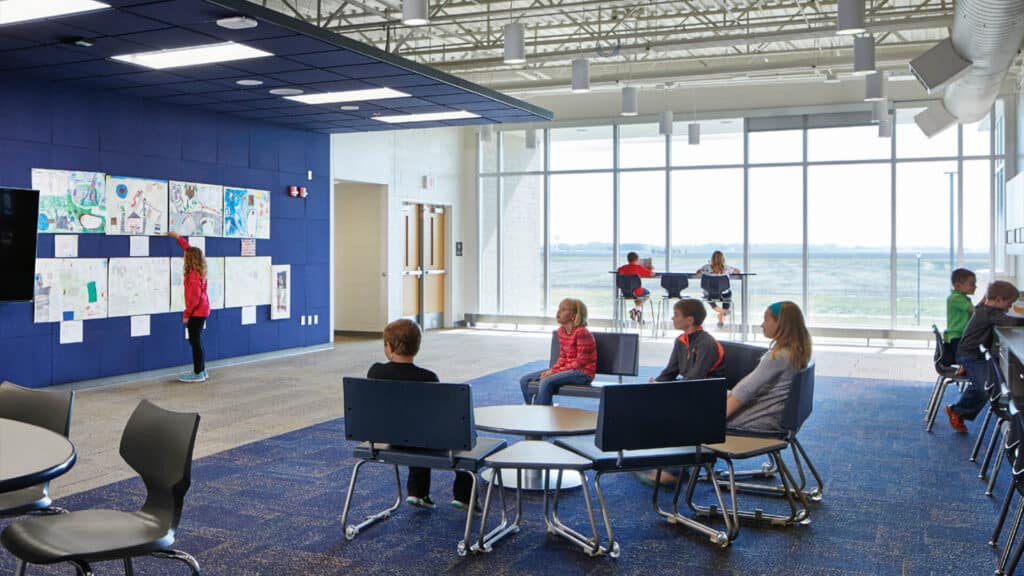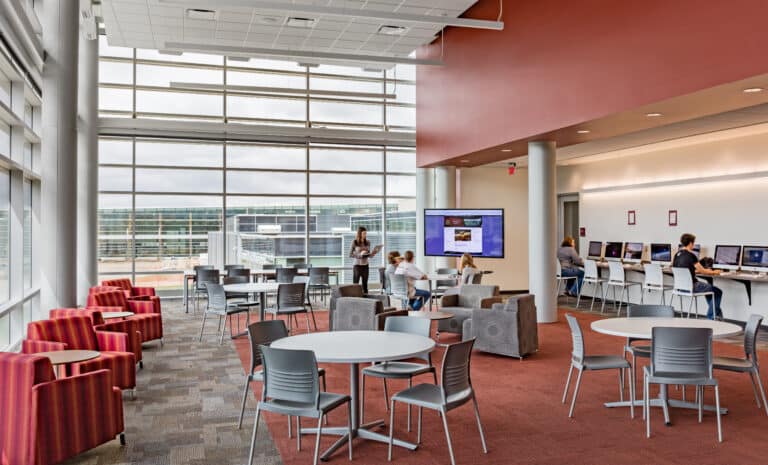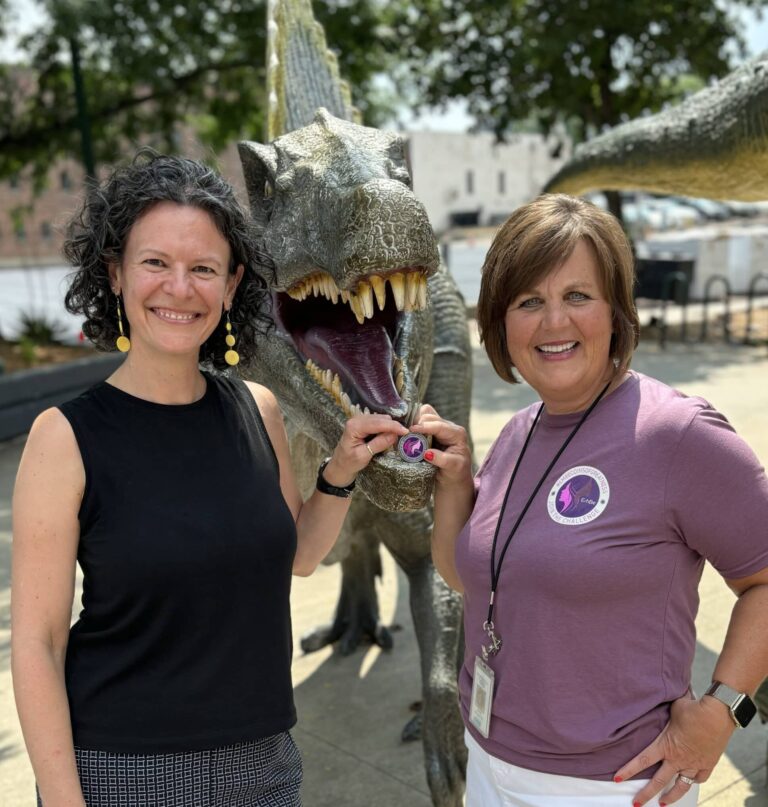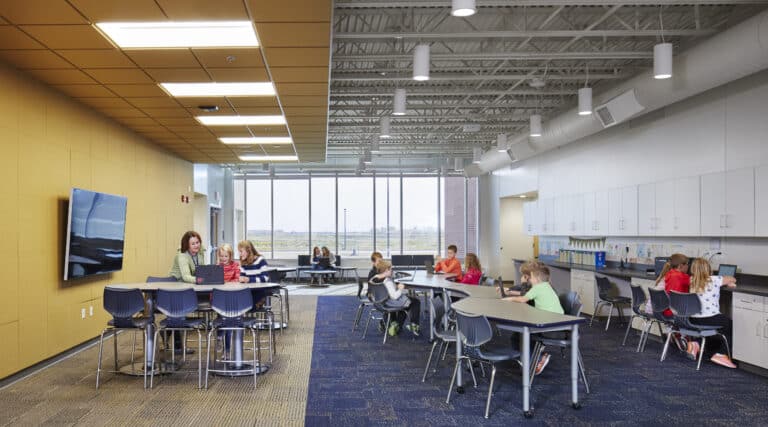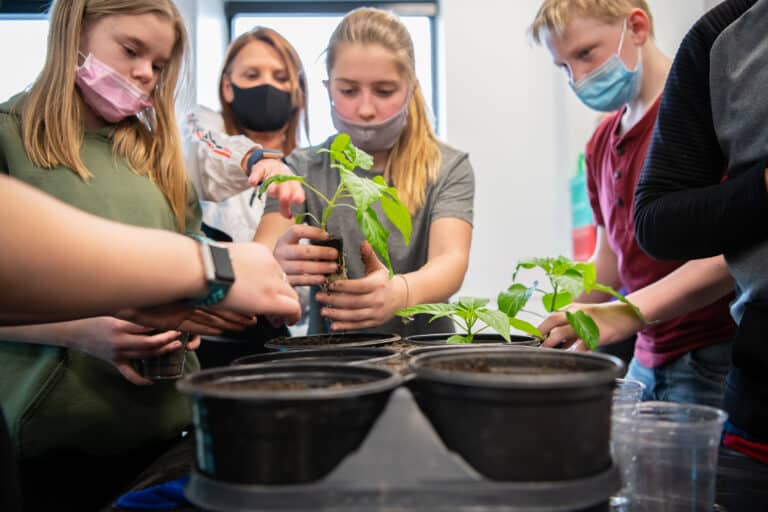This past year has been a prime example of the theory that “the only constant in life is change.”
We continue to face challenges as we battle the ongoing pandemic, and we have reached a point where we can begin to ask ourselves “What’s next? ” What comes next during the pandemic, and after this pandemic is over? This last year has caused all of us to closely examine everything we do, including how schools can best react to the challenges the pandemic has presented. Specifically, the big question is how do schools allow staff and students to safely return to, or remain in, the school buildings? Being able to answer this question with what works, and what does not work, is critical in understanding what might be next for districts, and what practices might outlive the current situation. To try to gain some insight into the answers to this question, we interviewed leaders at several school districts to get their thoughts.
While no one has a crystal ball to predict what will come next, districts have learned much over the last few months that can provide guidance moving forward. When it came to preparing to open this past fall, one thing we learned when talking to districts was the tremendous value in early planning with a broad spectrum of participants. James Nold of Sioux Falls Public Schools in South Dakota noted that “including a significant number of administrators, community members, teachers, parents and others to create our Return to Learn Plan” helped prepare their district for the fall start.
With schools approaching the one year date of distance learning, we also asked school leaders what they tried that worked and what didn’t, and where there were “blind spots” in their planning. The first step for most districts to understand what was possible for the school year was looking at simulated capacity studies over the summer. These studies helped districts understand what they were able to do in certain spaces and informed their back-to-school plans. For many, the limited capacity of their classrooms with social distancing was a common challenge. This was particularly true for districts with older buildings, where rooms are generally smaller, and corridors are narrower.
The need to keep students and staff separated in the building extended beyond the classroom. Districts found that they needed to look at the flow of traffic in and around the building as well. This included everything from vehicle traffic for pick up and drop off to student traffic in the hallways. While dealing with this has been extremely challenging for districts during the pandemic, some of what they changed is likely to stick around after the pandemic. Avoiding bottleneck situations with single entrances into larger spaces, one-way traffic in hallways, and studying locker configurations have been critical elements of a safe school during this pandemic, and these adjustments have taught administrators valuable lessons that will continue after the pandemic. When asked about ways their existing facilities have impacted their back-to-school plans Michelle Weber of West Fargo Public Schools in North Dakota noted that “locker bays are a huge hinderance. There is no way to social distance. ” Locker bays and narrow halls make accommodating required distancing difficult. We’ve learned that less kids in these spaces creates a calmer environment and “reduces behavioral issues related to the “crazy” that occurs in tight spaces! This is a WIN-WIN for us in the office!”. Now is the time to reimagine lockers and circulation.
A staggered release at the end of the day was a practice that many districts had avoided in the past. With the pandemic, they had no choice but to implement it in order to maintain social distancing between students. After trying it, many districts told us it is a practice that will remain even after the pandemic is over, as it reduced many of the issues they had with the large influx of students into the corridor at the end of the day. Anticipating that many of the sterile aspects of social distancing, sanitizing, and mask-wearing would make school feel “impersonal”, many districts found success by focusing on making the buildings as welcoming as possible. They did this in a variety of ways, such as including school colors in PPE and signage or reducing the clutter in the classroom. Even these small efforts helped the social and emotional response of students and staff. Pam Cronin of West Fargo Public Schools in North Dakota, noted that “balancing the physical health of all involved with the mental health of all stakeholders was the most difficult task. ”
With a better understanding of their facilities, districts are now looking to see how they can be better prepared for future events. This includes creating a data base of space information across all district buildings, more education for principals and staff on how their buildings function, and opening up the means of communication between staff, administration, and facilities personnel. The pandemic has challenged districts to think about what will become new standards in future building projects; including things like bottle fillers on drinking fountains, paper towels vs hand dryers, and improved mechanical systems. With many districts looking at concerns surrounding indoor air quality and air flow. Scott Hogen, Facilities Director for Mankato Area Public Schools in Minnesota, explained that the energy management systems at some of their facilities were a great asset in addressing the issue for their district. The systems “made it easy to get building flushes going. It took about a week to reprogram the systems, so they now have a ‘quick button’ to do an immediate flush. On-site facility person can do that as well as main facilities can do it. ”
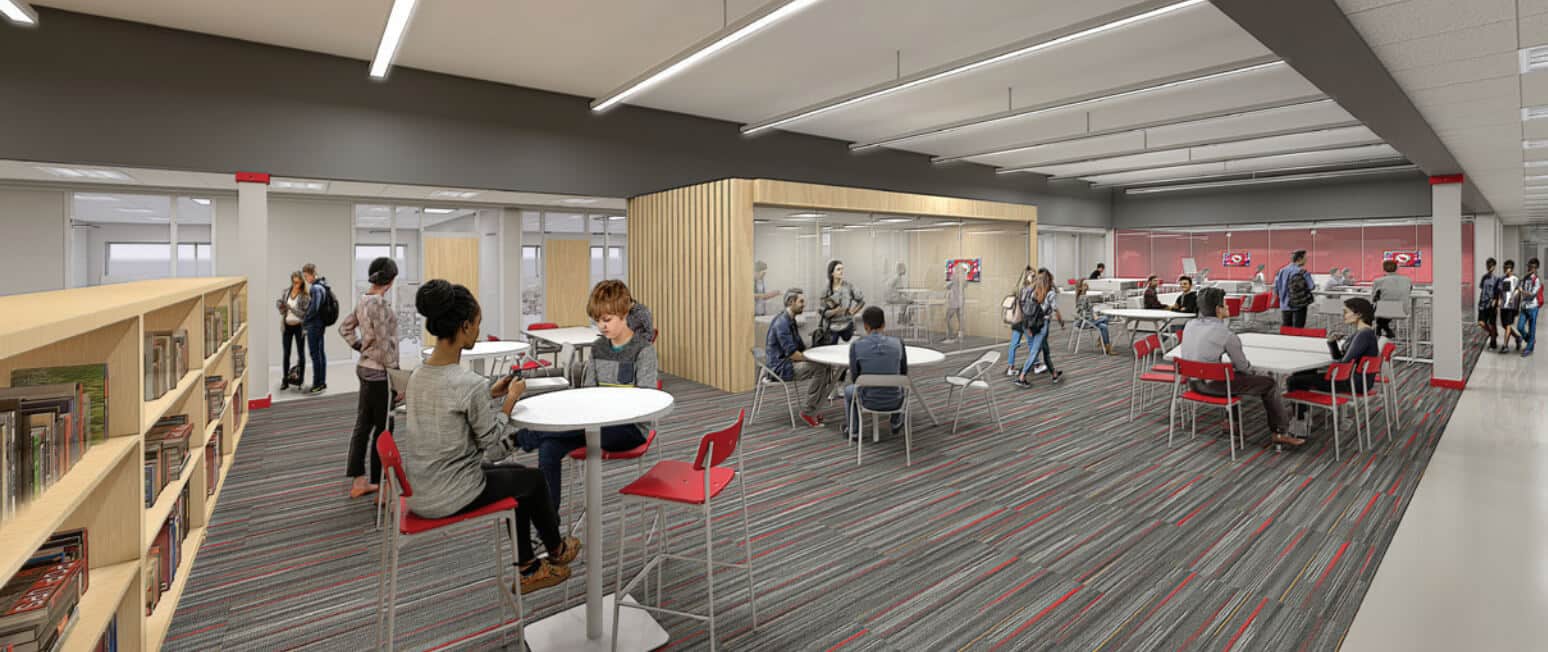
So how can these experiences help districts prepare for the future? We believe future opportunities exist in overlaying the freedom and flexibility that distance-learning provides with the social and emotional benefits that collaboration and connectivity bring to in-person learning to identify where they overlap. This overlap is the “sweet spot” where we can take best advantage of both strategies to improve our virtual and physical learning spaces.
It just so happens that this “sweet spot” coincides with the goals of NEXT Century Education, Critical Thinking, Communication, Collaboration, and Creativity. Buildings designed with NEXT Century Education in mind also happen to have been the ones to best support social distancing and safety during the pandemic. Steve Holen of McKenzie County Schools in North Dakota said that their “facilities have helped when open/flexible spaces are available to accommodate alternative plans and innovative efforts. The collaborative areas at the high school and Fox Hills Elementary have provided great value in a pandemic in which distancing and flexibility use is critical. The ability to have additional space and capacity has been vital to a school district our size to accommodate 5-day a week programming and limit contact tracing issues. Spaces such as the High School theater and intervention rooms provided options that are not available in our other buildings. ”

Buildings designed with NEXT Century learning environments allowed districts to create smaller but connected cohorts of learners within the school during this time. Like in other schools, classrooms necessarily have more limited capacity due to social distancing requirements, but because those classrooms were open to and visible from adjacent informal learning spaces, teachers were able to provide instruction and support to students who were in the classroom and in spaces adjacent to the classroom. Since the buildings were also rich with technology, these “not-so-distant” learners, as well as distance learners, could tap into the lessons being delivered in the classroom and receive the same instruction. This arrangement supported more students than the traditional corridors and classroom models could. These widened corridors within the learning communities also addressed a traffic flow concern that are seen in older buildings. Widened corridors designed to create informal learning spaces also allowed students and staff to observe social distancing and pass more safely. Districts have also seen the benefits of flexible furniture and a variety of spaces for staff and students to go during the day to work alone, collaborate or take a mask break.
What else has worked that districts will continue doing after the pandemic? More flexible schedules for students and engaging in a more virtual way with parents and students. Districts across the board have seen an increase in parent participation in parent-teacher-student conferences when they were held online. The opportunity to “flip the classroom” has given teachers more time to help when students are in-person, separating bus and car traffic during pick up and drop off times, and providing materials and fabrics that can be easily sanitized are all successful strategies that districts see sticking around.
There will likely be more innovations to come that will still be with us after the pandemic. Alicia Fischer, Principal at Apollo High School in St. Cloud, MN noted that despite what the year has presented their district “what is great now is we have permission to try things – there are no “errors. ” This is leading to new and better ways to do things. ” We’re in a spot now where we can position ourselves to not rely on reactive thinking but to be proactive and rethink what education and what the spaces we learn in can look like.
The world has changed, and we need to continue to change with it. What has worked for your district? What hasn’t? What will you keep doing even after the pandemic is behind us? I would love to hear your stories. Please email them or call me at Katie Becker: cbecker@jlgarchitects. com or 605.271.2990
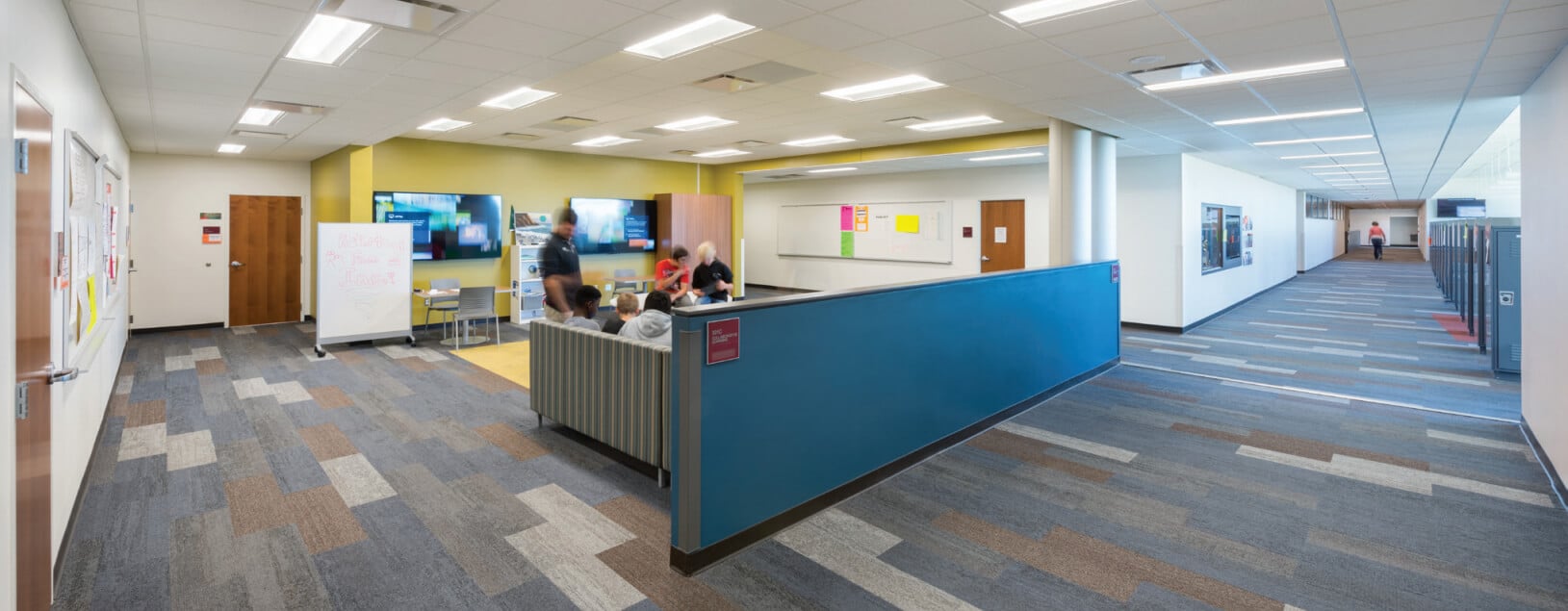
Find out more about what K-12 teachers and administrators learned from educating in 2020 in our K12 Questions & Answers segment.
Contributors List: James Nold, Assistant Superintendent of Sioux Falls Schools; Scott Hogen, Facilities Director for Mankato Area Public Schools; Beth Slette, Superintendent of West Fargo Schools; Steve Holen, Superintendent of McKenzie County Public Schools; Gary Ganje, Director of Operations for St. Cloud Area School District ISD 742; Mike Spanier, POSA for St. Cloud Area School District ISD 742; Zach Dingmann, Intermediate Principal in Sartell-St. Stephen School District; Alicia Fischer, Principal at Apollo High School in St. Cloud Area District 742; Mike Rivard, Principal Oak Hill Elementary School in St. Cloud Area School District 742; Dr. Pan Cronin, Principal at Horace High School in West Fargo Public Schools; Michelle Weber, Principal at Liberty Middle Schools in West Fargo Public Schools; Heather Leas, School Safety & Security Coordinator at West Fargo Public Schools.
